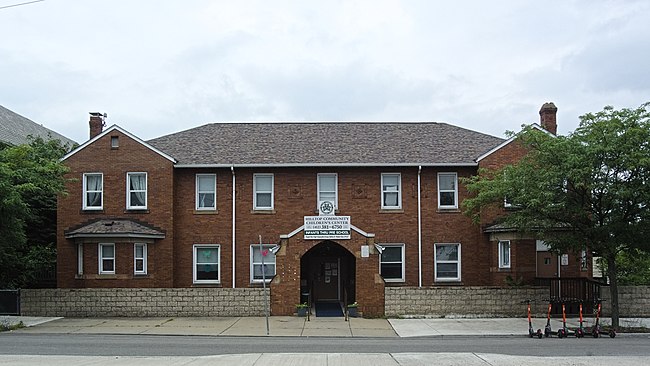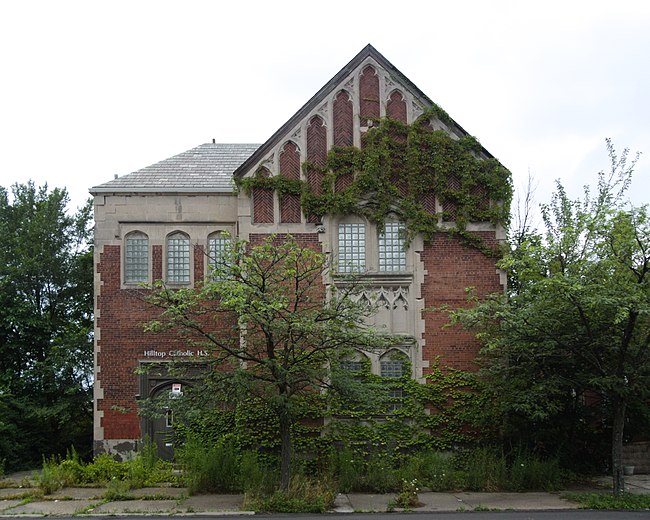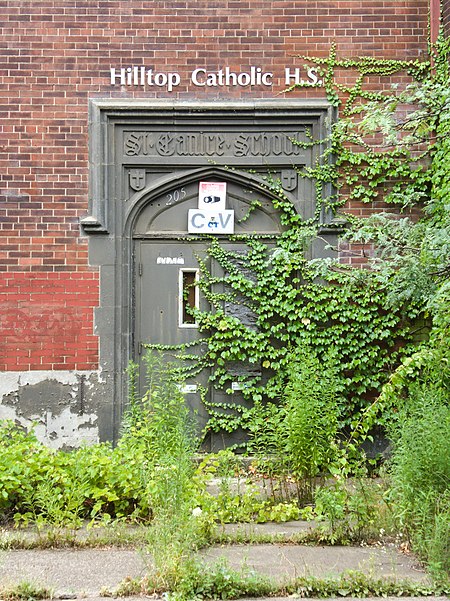
St. Canice is an unusual Romanesque church that closed in 2005. Since then it has sat vacant. It was sold to Lion of Judah Church in 2012, but it seems nothing came of the plans to refurbish the building, and as it ages it will only get more expensive to refurbish. Churches are hard to find alternate uses for, and Knoxville is not a neighborhood where trendy loft apartments—the only consistently profitable use Pittsburghers have found for old church buildings—would sell. This is an endangered landmark.

It took eleven separate photographs to make this composite of the Orchard Place front of the church. Except for the inevitable distortion of the tower, this is a very close approximation of the way the architects imagined these buildings. The main Romanesque church was built in 1894, according to this city architectural inventory (PDF); the Gothic chapel additions were built in 1928 and 1932.


Like many Catholic churches in Pittsburgh, St. Canice was not just a church: it was a whole village, forming the heart of a community. There was a school, and a convent for the sisters who taught for the school, and a rectory for the priests who served in the church. The tragedy of decaying communities like this is that, at a certain point, it becomes too expensive to maintain the church; but, once the heart is ripped out, the decay is immeasurably accelerated.
The rectory and convent are in good shape.

The rectory, built in 1928. Addendum: The rectory was designed by William P. Hutchins.

The convent, built in 1913 with additions in 1930. Addendum: The original 1913 convent was designed by A. F. Link.1

The school, on the other hand, is half-swallowed by jungle. It was repurposed as Hilltop Catholic High School for a while, and more modern buildings (from 1960) are behind this entrance; but the school has been abandoned for years, and will eventually have to be demolished. It was bought by a Baptist church at the same time St. Canice Church was bought by Lion of Judah, but the church seems not to have been able to do anything with the buildings.


- Source: The Construction Record, September 13, 1913: “Architect A. F. Link, 407 N. Craig street is taking bids on erecting a two-story brick convent on Knox avenue and Orchard street, Knoxville, for St. Canice’s Roman Catholic Congregation.” ↩︎

Leave a Reply